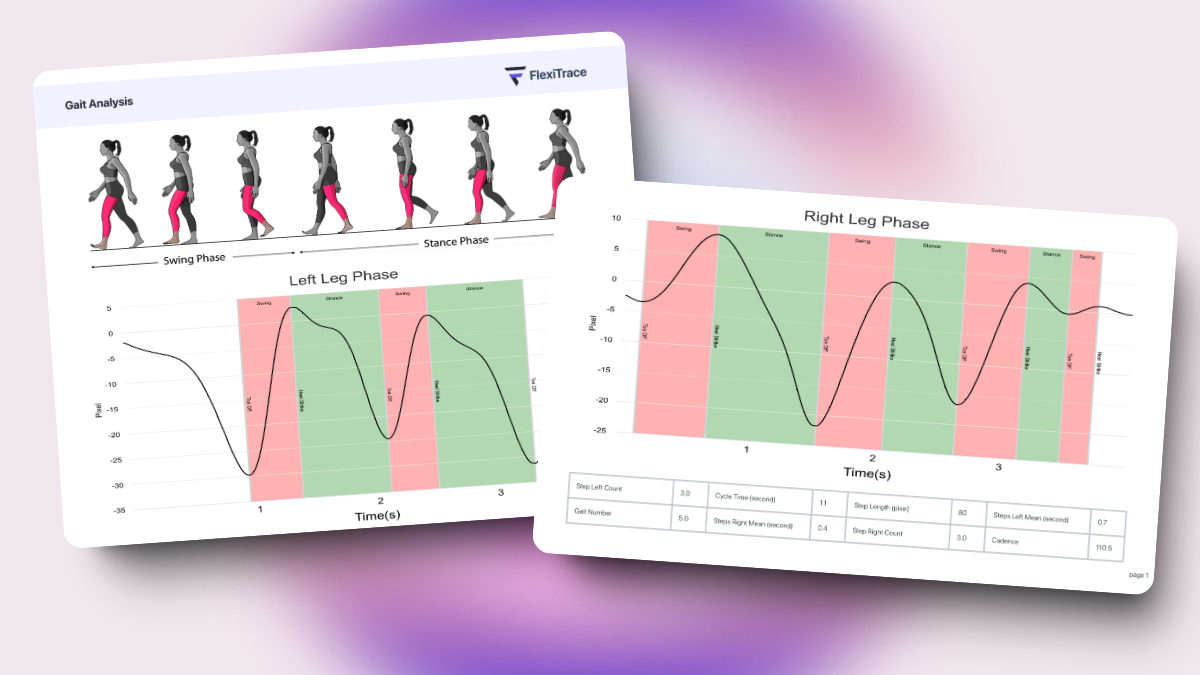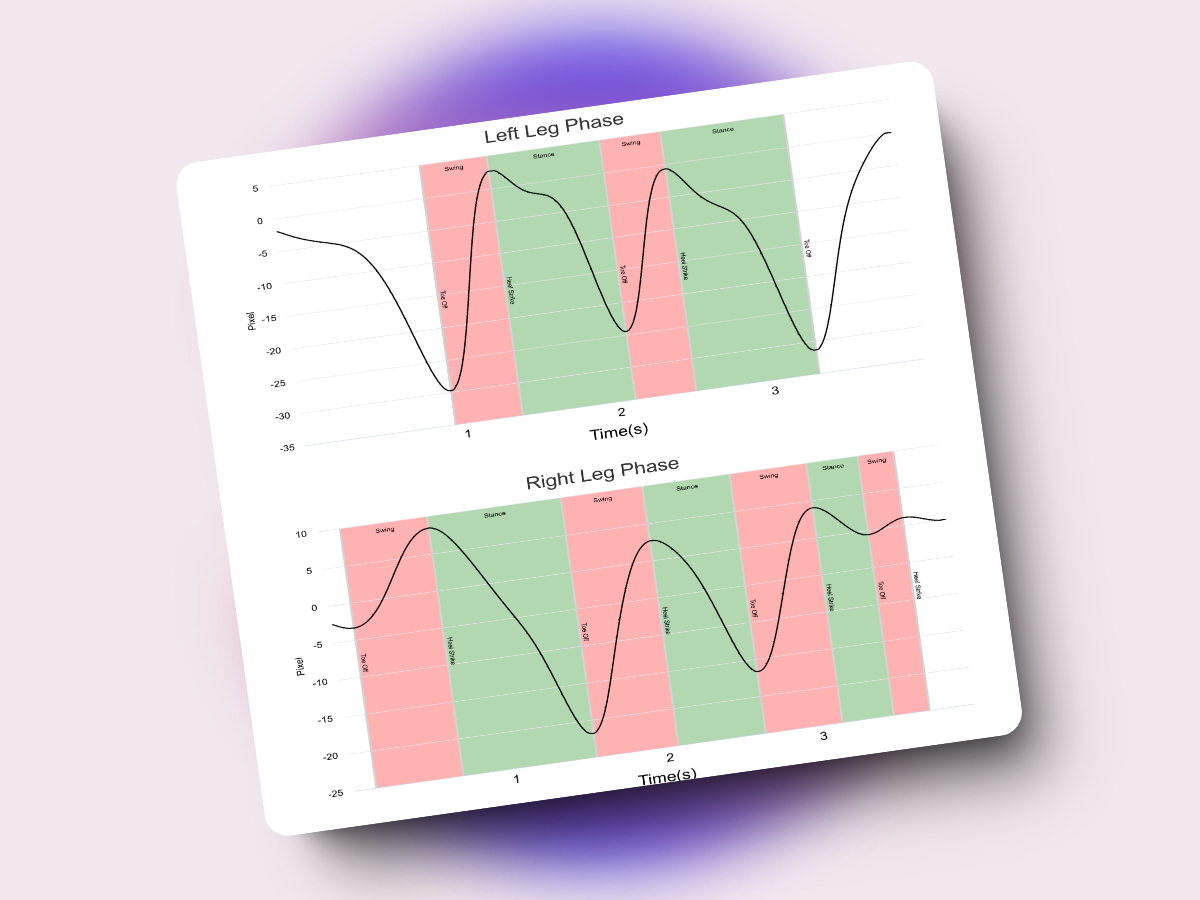
Gait analysis is a vital tool in the fields of physical therapy and orthopedics. It plays a key role in identifying postural and skeletal disorders, developing personalized rehabilitation plans, and monitoring patient progress. Additionally, gait analysis can significantly enhance athletic performance by improving techniques, reducing injury risks, and allowing for precise training adjustments.
Traditionally, gait analysis is conducted in advanced biomechanical labs equipped with marker-based 3D motion capture systems. While these labs provide sophisticated analysis, they are often expensive, time-consuming, and not easily accessible, particularly in rural areas. These labs also require specialized equipment and trained professionals, making it challenging to study elderly adults, especially those with movement issues.
FlexiGait offers a promising alternative to traditional lab-based gait analysis, delivering lab-compatible reports using only a smartphone camera and eliminating the need for expensive, cumbersome equipment.
How FlexiGait Works
FlexiGait leverages advanced image processing and AI techniques to preprocess videos and extract key spatio-temporal features including:
• Joint range of motion
Joint range of motion measures the extent of movement around a joint, such as how far an arm can reach or how much a knee can bend. This is crucial for identifying restrictions or abnormalities in joint movement.
• Angles symmetry
Angles symmetry assesses the balance and uniformity in the angles of joint movements between the left and right sides of the body. This helps detect any asymmetries that might indicate potential issues in gait or posture.
• Gait Cycle Length
Gait cycle length: Gait cycle length, also known as step length, is the distance covered between two successive points of contact of the same foot during walking. Essentially, it measures the distance from the heel strike of one foot to the heel strike of the same foot in the next step. This metric is crucial for evaluating walking efficiency, detecting abnormalities in stride, and tailoring rehabilitation programs.
• Gait Cycle Width
Gait cycle width, also referred to as step width or stride width, is the lateral distance between the feet during walking. Specifically, it measures the side-to-side distance between the midpoint of one foot and the midpoint of the other foot in consecutive steps. This metric is important for assessing balance and stability during gait, with wider step widths often indicating compensatory mechanisms for balance issues or underlying musculoskeletal conditions.
• Gait Cycle Time
Gait cycle time, also known as stride time, is the duration it takes to complete one full gait cycle. This cycle includes the sequence from the initial contact of one foot to the next initial contact of the same foot. It encompasses both the stance phase, when the foot is on the ground, and the swing phase, when the foot is in the air. Gait cycle time is a critical measure for assessing walking speed and rhythm, and deviations from typical cycle times can indicate potential mobility issues or neuromuscular disorders.
• Cadence
Cadence in gait is a measure of speed calculated as the total number of full cycles (of both a right and left foot strike) taken within a given period, often expressed in steps per minute or cycles per minute. It is used as a measure of athletic performance.
• Number of steps
The number of steps counts the total steps taken within a specific period or distance. This metric helps in evaluating overall activity levels and detecting any deviations in walking patterns.
• Limbs length
Limbs length is extracted to check whether one leg or arm is shorter than the other. This can be caused by a previous fracture, trauma to a growth plate, or a previous infection. Genetic conditions or syndromes can also result in one limb being longer than the other.
• Stance & Swing phase detection
Stance and swing phase detection identifies the different phases of the gait cycle. The stance phase is when the foot is in contact with the ground, and the swing phase is when the foot is in the air. This analysis helps in understanding the distribution and timing of these phases for each leg, revealing potential issues in gait mechanics.

Unlike traditional lab setups, FlexiGait can provide personalized reports in under a minute, ensuring quick and efficient analysis.
| All Rights Reserved | FlexiTrace Developers LTD